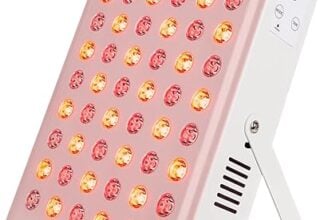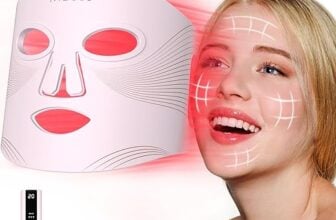Ever caught yourself staring in the mirror, tilting your head for that perfect angle, just to check if your hairline is retreating like a tide at dusk? It’s a common moment of self-reflection that many experience, often accompanied by a hint of worry.
Hair thinning is a topic that touches more lives than we might think. Across the globe, hairline recession affects a significant portion of the population, and with it comes a dip in confidence that can cast a long shadow over one’s self-esteem.
But fret not—this blog is your guiding light through the haze of uncertainty. We’re diving into a treasure trove of practical and easy-to-follow tips designed to help you keep that hairline right where it belongs.
From understanding the root causes to exploring lifestyle changes and dietary tweaks, we’re here to arm you with the knowledge to tackle hairline recession head-on. Let’s embark on this journey together and prevent those strands from waving goodbye before their time.
Understanding the Causes
Unraveling the mystery behind hairline recession starts with understanding its root causes. Let’s dive into the key factors that can influence this common concern.
- Genetics:
- Ever wonder why your family seems to share similar hair traits? Genetics play a significant role in determining your hairline’s fate. If your parents or grandparents experienced hairline recession, chances are you might, too. This hereditary pattern is linked to genes that influence hair follicle sensitivity to certain hormones, setting the stage for potential changes in your hairline.
- Hormonal Changes:
- Hormones are powerful regulators of many bodily functions, including hair growth. One hormone that often comes into play is dihydrotestosterone (DHT). Elevated levels of DHT can shrink hair follicles, making them less effective over time. This hormonal imbalance can lead to thinning hair and a receding hairline, especially in those genetically predisposed.
- Environmental Factors:
- Beyond genetics and hormones, your environment can also impact your hairline. Stress, for instance, is a notorious hair health saboteur. Chronic stress can disrupt your hair growth cycle, pushing more hair follicles into the shedding phase. Additionally, pollution can damage hair and scalp health, with particles and toxins weakening the hair shaft and potentially accelerating hairline recession. Managing stress and protecting your hair from environmental damage are crucial steps in maintaining a healthy hairline.
By understanding these causes, you can better equip yourself with the knowledge needed to take proactive measures against hairline recession.
Lifestyle Changes for Prevention
Adopting key lifestyle changes can make a significant difference in maintaining a healthy hairline. Let’s explore some effective strategies to keep your locks in check.
- Stress Management:
- Stress is more than just a mental burden—it can have tangible effects on your hair health. Chronic stress can lead to increased hair shedding and thinning. To combat this, consider integrating stress-reducing activities into your daily routine. Techniques such as meditation and yoga are not only great for your mental well-being but also help in lowering stress hormones that can affect hair growth. Meditation promotes relaxation and mindfulness, while yoga combines physical activity with breath control, both of which can create a peaceful state of mind. Just a few minutes each day can build resilience against stress-related hair issues.
- Exercise and Overall Health:
- Regular physical activity is a cornerstone of a healthy lifestyle, and it plays a crucial role in maintaining hair health too. Exercise boosts blood circulation, ensuring that your scalp receives plenty of oxygen and nutrients. This, in turn, supports the health of hair follicles and encourages robust hair growth. Activities like jogging, swimming, or even brisk walking can contribute to better circulation and stress reduction, creating a healthy environment for your hair. Moreover, exercise helps regulate hormones and reduces inflammation, both of which are important for hair health. Making fitness a consistent part of your life can be a powerful preventive measure against hairline recession.
By incorporating these lifestyle changes, you’re not only helping your hairline but also enhancing your overall well-being. It’s time to take proactive steps and invest in yourself inside and out.
Dietary Tips for Healthy Hair
Your diet plays a pivotal role in keeping your hairline intact and your locks luscious. Here’s how you can nourish your hair from the inside out.
- Essential Vitamins and Minerals:
- Vitamins and minerals are the building blocks of healthy hair. Biotin, a B-vitamin, is crucial for hair growth as it strengthens hair and promotes elasticity. Vitamin E acts as an antioxidant, protecting your hair from damage caused by free radicals and enhancing scalp circulation. Iron is another essential nutrient, helping red blood cells carry oxygen to your hair follicles, which is vital for growth and strength. Ensuring you get these nutrients can make a big difference in maintaining a healthy hairline.
- Foods to Include:
- Incorporating the right foods into your diet can provide the nutrients needed for strong hair. Nuts, like almonds and walnuts, are rich in biotin and Vitamin E. Eggs are an excellent source of protein and biotin, making them a fantastic choice for breakfast or brunch. Leafy greens such as spinach and kale are packed with iron and Vitamin C, aiding in collagen production and enhancing hair strength. Including these foods in your meals can help bolster your hair’s defense against thinning and recession.
- Hydration:
- Never underestimate the power of good old water! Staying hydrated is vital for every aspect of health, including your hair. Proper hydration ensures that your hair remains supple and resilient, reducing the risk of breakage. It helps in maintaining a healthy scalp environment, which is essential for consistent hair growth. Aim to drink plenty of water throughout the day to keep your body—and your hair—well-hydrated.
By focusing on these dietary tips, you can give your hair the best possible chance to flourish and fend off a receding hairline before it even starts.
Effective Hair Care Routines
Taking care of your hair involves more than just the occasional trim. Implementing an effective hair care routine can help prevent hairline recession and keep your mane strong. Let’s explore some essential steps to nurture your hair.
- Gentle Cleansing:
- The foundation of a good hair care routine starts with cleansing. Using mild shampoos and conditioners is key to maintaining healthy hair. Harsh chemicals in many conventional hair products can strip your hair of its natural oils, leading to dryness and brittleness. Opt for sulfate-free shampoos that cleanse without causing irritation and choose conditioners that hydrate without weighing your hair down. A gentle approach to washing can preserve your hair’s natural strength and shine.
- Avoiding Damage:
- Heat styling and chemical treatments might give you the look you want temporarily, but they can wreak havoc on your hair’s health over time. Reduce the use of high-heat tools like straighteners and curling irons, and embrace air-drying whenever possible. When styling is necessary, use a heat protectant to shield your hair from damage. Additionally, steer clear of harsh treatments such as perms or frequent dyeing, which can weaken the hair shaft and contribute to thinning. Prioritize your hair’s long-term health over short-lived styles.
- Scalp Care:
- Often overlooked, scalp care is a vital part of preserving a healthy hairline. Regular scalp massages can significantly enhance blood circulation, delivering essential nutrients and oxygen to hair follicles. This increased circulation fosters stronger hair growth and can reduce the risk of hairline recession. Incorporate a few minutes of scalp massage into your routine, perhaps while conditioning your hair or applying a nourishing oil. This simple practice can yield noticeable benefits for your hair’s vitality.
By embracing these effective hair care routines, you can protect your hairline and ensure your hair remains healthy and vibrant. Remember, consistency is key, so make these practices a regular part of your hair care regimen.
Early Interventions
Taking action early can make all the difference when it comes to preserving your hairline. Let’s explore the steps you can take to identify and address early signs of hairline recession.
- Recognizing Early Signs:
- The first step in effective intervention is knowing what to look for. Early signs of a receding hairline often manifest as thinning hair at the temples or excessive shedding. You might notice more hair in your brush or shower drain than usual. Pay attention to your hair’s texture and density; if it feels noticeably thinner or sparser, it could be an early indicator of hairline changes. Early detection allows for timely intervention, improving the chances of maintaining a healthy hairline.
- Over-the-Counter Treatments:
- Over-the-counter treatments like minoxidil are popular options for those noticing early signs of hair thinning. Minoxidil, available in topical forms like foams or solutions, is designed to stimulate hair growth and slow balding by widening blood vessels and opening potassium channels, which helps more oxygen, blood, and nutrients reach the hair follicles. Consistent use is key for effectiveness, and while results can vary, many users report positive outcomes with regular application. It’s important to follow the product instructions carefully and remain patient, as visible results can take several months.
- Natural Remedies:
- For those preferring a more natural approach, herbal treatments like rosemary oil can offer a gentle alternative. Rosemary oil is believed to improve circulation to the scalp, encouraging hair growth and preventing hair follicles from being starved of blood supply. Regularly massaging the scalp with a mixture of rosemary oil and a carrier oil can enhance its effectiveness, providing a nurturing boost to your hair care routine. Other natural remedies, such as aloe vera and saw palmetto, also show promise in supporting hair health.
By being proactive and attentive to these early interventions, you can better safeguard your hairline and manage hair thinning before it progresses. Tailor your approach based on your preferences and hair needs, and remember that early action is your best defense.
When to Seek Professional Advice
Navigating hairline changes can be daunting, but knowing when to reach out for professional help can make all the difference. Let’s discuss when it’s time to consult a dermatologist and explore advanced treatment options.
- Consulting a Dermatologist:
- If you’re noticing persistent hair thinning or bald patches that don’t respond to home treatments, it might be time to consult a dermatologist. Sudden or significant hair loss can sometimes indicate underlying health issues that require medical evaluation. A dermatologist can provide a comprehensive assessment, diagnose any underlying conditions, and recommend a tailored treatment plan. Don’t hesitate to seek professional advice if you’re concerned about the rate or pattern of your hair loss, as early intervention can lead to better outcomes.
- Advanced Treatments:
- For those seeking more intensive solutions, advanced treatments like Platelet-Rich Plasma (PRP) therapy and hair transplants offer promising options. PRP therapy involves injecting concentrated platelets into the scalp to stimulate hair growth and improve hair health, leveraging the body’s natural healing processes. Hair transplants, on the other hand, involve relocating hair follicles from a denser area to thinning or balding spots, providing a more permanent solution to hair loss. Both treatments require professional expertise and can offer significant results for those dealing with advanced hairline recession.
By knowing when to seek professional advice and understanding the available advanced treatments, you can take decisive steps toward maintaining a healthy hairline and addressing hair loss concerns effectively.
Conclusion
As we wrap up our guide on preventing a receding hairline, let’s revisit the key strategies that can help keep your hairline intact and healthy. We’ve explored crucial lifestyle changes, such as managing stress through techniques like meditation and yoga, and emphasized the importance of regular exercise for maintaining overall hair health. Dietary tips play a significant role too, with a focus on essential vitamins and minerals, embracing foods like nuts, eggs, and leafy greens, and the importance of staying hydrated.
We’ve also highlighted effective hair care routines, advising on gentle cleansing with mild shampoos and conditioners, avoiding damage from heat styling and harsh treatments, and nurturing your scalp with regular massages to boost circulation.
Recognizing early signs of hair loss and exploring over-the-counter treatments like minoxidil or natural remedies such as rosemary oil can make a significant difference. And when necessary, knowing when to seek professional advice, such as consulting a dermatologist or considering advanced treatments like PRP therapy and hair transplants, can provide further reassurance and solutions.
Now is the time to put these tips into action. Start incorporating these preventive measures into your daily routine today for healthier, more resilient hair. We’d love to hear from you—what are your thoughts or experiences with these strategies? Have questions or additional tips to share? Join the conversation in the comments section below and become part of our community striving for better hair health. Let’s support each other on this journey to keeping our hairlines strong and thriving!





